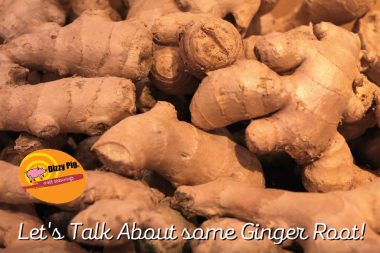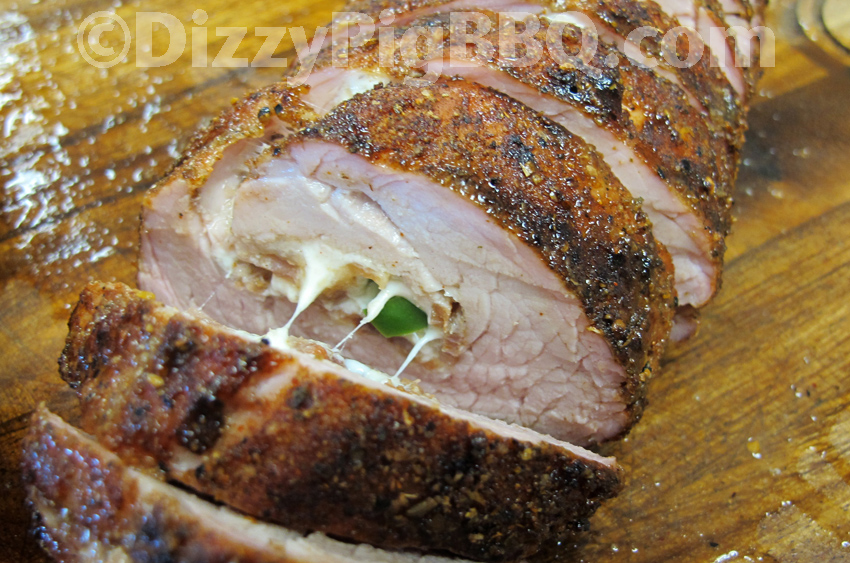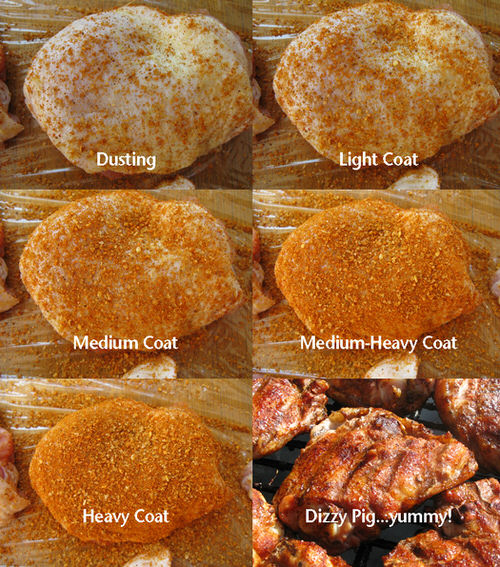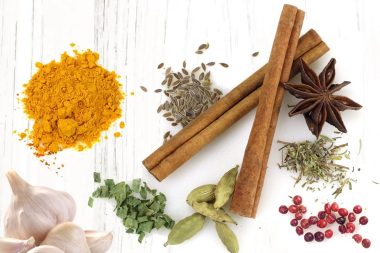
The Amazing & Mighty Ginger
Part of cold weather cooking includes working in Superfoods that keep us healthy and nourish us to stay well. Ginger is a big player here. Read More
Free Shipping on orders $75+ (USA only)
 When you spend your hard-earned money on carefully blended seasonings, the taste of your food should exceed your expectations.
When you spend your hard-earned money on carefully blended seasonings, the taste of your food should exceed your expectations.But it doesn’t always happen that way.
Determining how much Dizzy Pig seasoning to apply to your food may be the most important thing besides cooking it properly. Yet it is difficult to explain how much spice should go on your meal. There’s just no easy answer.
There are so many variables when it comes to cooking.
We’ve been cooking with Dizzy Pig seasonings for ourselves and our guests at home and for picky judges out on the competition BBQ trail for 12 years now. And we’ve been listening to our customers for just as long.
Over that time we’ve developed a real “feel” for how to use Dizzy Pig properly, and we’ve proven that:
can be an awesome experience.
In the end, when you put the bite of food in your mouth, it comes down to salt content and the finished flavor. Optimally,
Getting the right finished flavor — the taste that wakes up the senses on many levels without taking over the flavor of the meat beneath the surface — is your goal.
There are a few important things to consider when deciding how much seasoning to apply to get that perfect flavor.
 Thickness of the food
Thickness of the foodIt may be obvious, but the thicker your meat, the more rub needed.

The longer your food cooks, and the more air that flows over the food, the more the spices will mellow and round out.
With short cooks, such as boneless skinless chicken breasts or fish, the spice layer is exposed to heat for less time and the exterior won’t fully caramelize. So the spice flavor will tend to be sharper and more robust. Use less rub for short cooks.
When cooking longer periods (over an hour), for example with chicken legs or ribs, the spices will have plenty of time to roast and brown… especially if cooking with direct heat. More rub can be used as the flavors will round out and mellow.

As with cooking time, the cooking temperature also has an effect on the finished flavor. The higher your temperature, the more browning on the surface of the food. The more browning, the rounder and mellower the finished flavor.
Temperature works hand in hand with time.

Every chunk of food has its own flavor. A piece of flounder cooks up mild and sweet, and a beef rib has a much heartier and complex flavor. A zucchini squash has a mild sweet flavor, and asparagus has a more complex nutty flavor.
The heartier and more complex the flavor of your food, the more seasoning it needs.

We just discussed how to achieve the proper level of spice flavor in the finished flavor of your meal. If you’ve used seasoning salt or heavily salted rubs you may have noticed the meat ends up with too much salt, and not enough spice flavor. Since Dizzy Pig rubs are low in salt, it is difficult to over salt your meal… at least without over spicing it as well.
Now that you have decided how much seasoning to apply to achieve your desired “finished flavor”, you should to make sure you get enough salt on your meal. There is really only a few cases where you should consider adding more salt.
If you are cooking a very mild food quickly, you will probably only want a dusting of seasoning. In this case, you may need to shake on a little extra salt.
Then on thicker meats, like roasts, it is usually a good idea to lay on a good dose of salt before you season.
Or simply make adjustments to your taste. It’s just one of those things… some people like more salt than others.
You’ll get a feel for the perfect amount to apply after a few cooks, but for reference, here are examples of different coatings of seasonings:

With these considerations in mind, and a little trial and error, you should be able to develop a feel for getting the most out of that jar of Dizzy Pig.
Pay attention to the finished flavor and the salt content, then adjust for your next cook.
It sure isn’t rocket science, but it’s worth paying attention to so you’ll be able to count on the perfect flavor on the meal you work so hard on.
Enjoying this Dizzy Tips article?
See more Dizzy Tips
The Amazing & Mighty Ginger
Part of cold weather cooking includes working in Superfoods that keep us healthy and nourish us to stay well. Ginger is a big player here. Read More
Healthy food can be delicious too: How Dizzy Pig uses Superfoods to spice things up!
Using superfood spices is an easy way to not only make food taste better but also get the health benefits we have all learned are vital. Read More
6 Award-Winning Tips for Moist and Tender BBQ
Winning over a pro BBQ contest judge is not easy, it takes moist, tender, and tasty BBQ and a lot of know-how. Read More

